Crematory ovens at Dachau"In the crematorium, the skeleton-like bodies of the dead still lay in a room next to the furnace, stacked like cordwood. The cement floor slanted to a drain which carried off the blood, but not the unforgettable stench of death. Unlike Auschwitz, where the Gas Chamber and the Crematorium were demolished by the retreating SS, the destruction of this horrifying evidence at Dachau by a time bomb was prevented when doughboys discovered and severed the wire which would have set off the charge. In addition, the entire building was a maze of booby-traps." Sergeant Scott Corbett, reporter for the Rainbow Reveille, 42nd Division newspaper 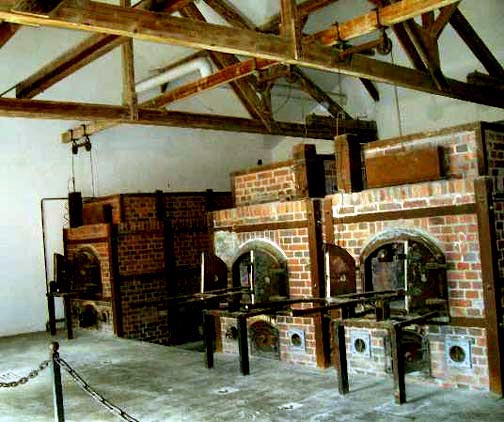 The photograph above shows three of the five single ovens in the new crematorium building called Baracke X. The cremation ovens had two sets of doors; the first set of doors opened outward. In the photo, the oven on the right has a metal inner door, positioned on the brick wall above the outer door; the inner door was dropped down into the oven behind the outer door. The oven on the left has a pulley and a counterweight for raising and lowering an inner door, but the door itself is missing. Time Magazine Correspondent Sidney Olsen wrote the following in his description of the new crematorium in an article published on May 7, 1945: Outside one building, half covered by a brown tarpaulin, was a stack about five feet high and about 20 feet wide of naked dead bodies, all of them emaciated. We went on around this building and came to the central crematory. The rooms here, in order, were: 1) the office where the living and the dead were passed through and where all their clothing was stripped from them; 2) the Brausebad (shower) room, where the victims were gassed; and 3) the crematory. In the crematory were two large furnaces. Before the two furnaces were hooks and pulleys on rafters above them. Here, according to a number of Frenchmen, the SS men often hanged prisoners by the necks or by the thumbs or whatever their fancy dictated. From here the victims could watch while being whipped and tortured as their comrades were slid into the furnace. According to a Dachau tour guide, the hooks on the beams shown in the photo below were used for hanging the dead bodies until they could be shoved into the ovens. The pulleys were used to lift the heavy inner door of the oven. Note that the pulleys are directly over the oven doors, but the hooks are on a beam that extends out from the oven door. 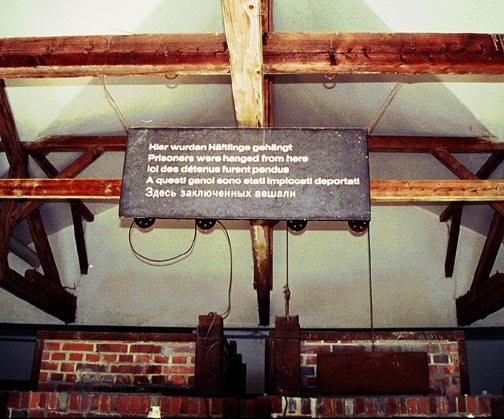 The sign in the photo above reads, in English, "Prisoners were hanged from here." It is not mentioned whether the prisoners were alive or dead when they were hung, but a sign has recently been added on the wall of the crematorium which makes it clear that the prisoners were killed, by hanging from the neck until dead, from the rafters in front of the oven. The new crematorium building was completed in April 1943, but the ovens was not used very much because, by October 1944, the Nazis had run out of coal to fire the ovens. In all the Nazi concentration camps, the bodies of dead prisoners were burned on the orders of Heinrich Himmler in an effort to prevent the spread of contagious diseases. In the photograph below, notice the rollers on which the stretchers were placed in order to shove the bodies inside the oven. When the American liberators arrived, these ovens were cold, as there was no coal available for burning, and bodies were piled up inside and outside the building. The ovens are now clean and there are no ashes remaining inside.  According to Marcus J. Smith, a U.S. Army doctor, who wrote a book called "The Harrowing of Hell" about the days immediately following the liberation of the camp, the ovens at Dachau were used by the American military to cremate the bodies found in the camp, including the bodies of some of the Waffen-SS soldiers who were killed when the camp was liberated. Smith wrote that, around May 6, 1945, the disposal of the bodies in the camp began: It is time to dispose of the bodies. Some are carried to the gravel pits. Then the furnaces of the crematorium are stoked and reignited. By increasing the work day for the operators from four to ten hours, 710 corpses are cremated in the next four days. Too slow! A top-level decision is made to bury the dead. 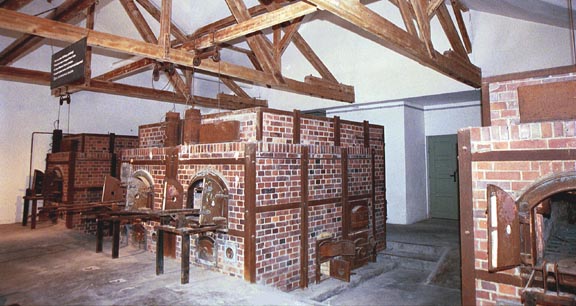 The green door in the background, between the ovens, leads to a hallway that runs behind the crematorium in the Baracke X building. On the wall behind the ovens, the Nazis had painted a picture of a man riding a huge pig with the caption, "Wash your hands. It is your duty to remain clean." All Nazi signs and slogans are gone now, except for the "Arbeit Macht Frei" sign on the entrance gate. Allegedly, the last bodies to be burned in these ovens were those of the Nazi war criminals who were condemned to death at the Nuremberg International Military Tribunal, including top Nazi Hermann Göring, who committed suicide before he could be executed. According to Robert E. Conot in his book "Justice at Nuremberg," their ashes were scattered in a stream outside the city of Munich, the birthplace of the Nazi movement. Dr. Francizek Blaha was a prisoner, who worked at the Dachau crematorium, performing autopsies. The following quote is from the affidavit of Dr. Blaha, given to American interrogators on 3 May 1945, and presented at the Nuremberg International Military Tribunal in November 1945: Sometimes prisoners were killed only because they had dysentery or vomited and gave the nurses too much trouble. Mental patients were liquidated by being led to the gas chamber and injected there or shot. Shooting was a common method of execution. Prisoners could be shot just outside the crematorium and carried in. I have seen people pushed into the ovens while they were still breathing and making sounds, although if they were too much alive they were usually hit on the head first. 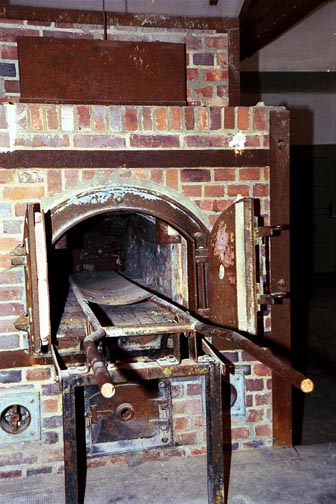 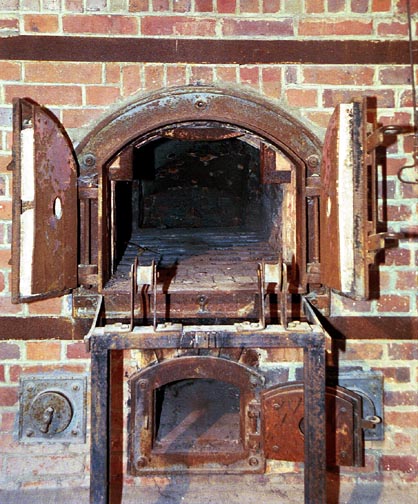 In the photograph below, notice the white duct pipe which goes through both the west wall and the south wall of the oven room. Through a window at the back of the building, a similar pipe can be seen going into the west wall of the homicidal gas chamber from the hallway behind it. A hallway also runs behind the oven room. In the background in the picture below, you can see a door, painted dark green, which leads into this hallway. Notice the pulley above the oven, which was used to raise and lower the inner door of the oven. 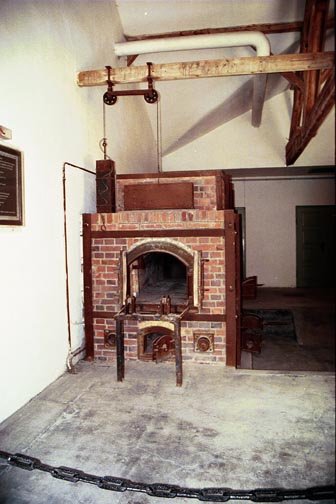 Old Photos of the OvensCrematoria AreaMore Photos of Baracke XBack to Table of ContentsHomeThis page was last updated on October 24, 2012 |